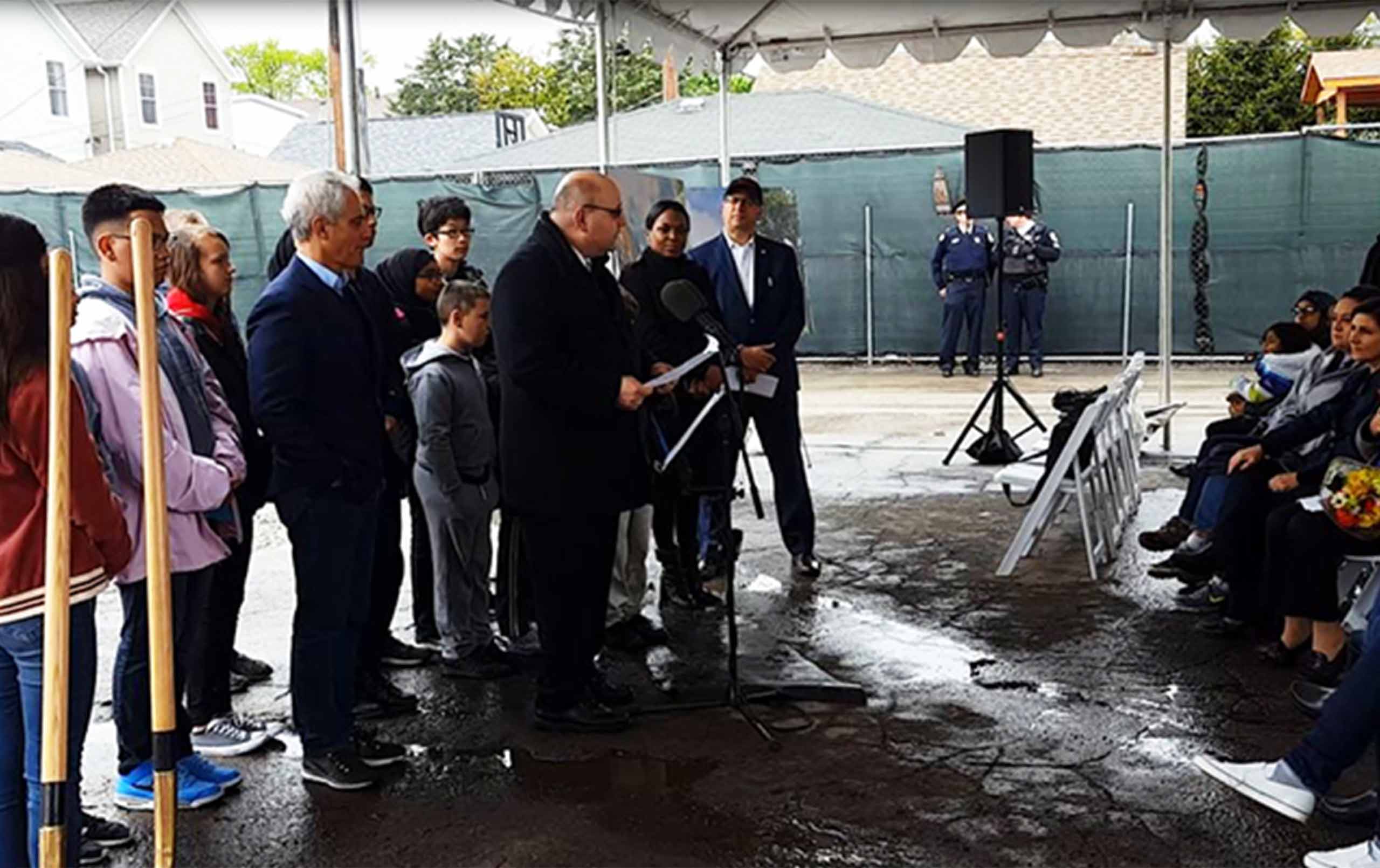
Expansion to 92-year-old school supports culture of academics and diversity
At a June groundbreaking for an annex to Prussing Elementary School, Chicago Public Schools Superintendent Dr. Janice Jackson called Prussing “a model for how we plan to continue to improve Chicago Public Schools overall.”
This year, the school achieved a “Level 1-plus” rating, the highest level in Chicago Public Schools’ performance rankings. Prussing is also known for its cultural diversity—the student body speaks 24 languages and comes from 37 countries.
However, the dated temporary classrooms on the school’s campus show a need for more space. Additionally, the school, built in 1926, has undergone nine decades of structural wear and tear, resulting in leaks, plus its site is dominated by asphalt.
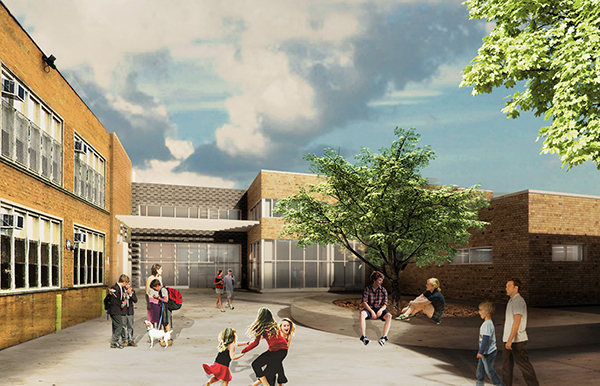
Recently, the Public Building Commission and Chicago Public Schools kicked off construction of a project that not only expands the school, but also repairs structural defects and reinvigorates the campus grounds.
At the groundbreaking, Chicago Mayor Rahm Emanuel complimented the school’s “culture of acceptance.” “I want others to see what you’re doing here at Prussing,” he said, “not just academically, but culturally.”
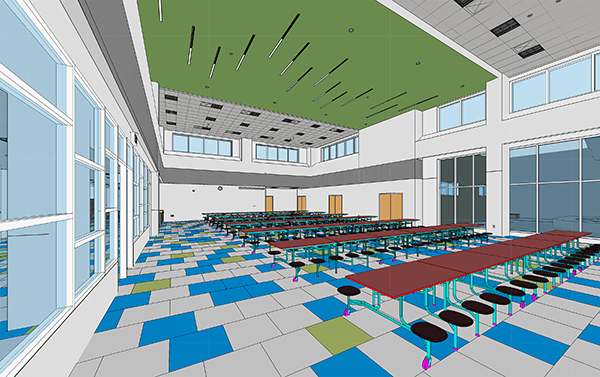
The 18,000-square-foot addition, designed by Legat Architects and constructed by The George Sollitt Construction Company, allows the school to house 700 students. The expansion creates a new entrance at the rear of the building. It includes an art room, science room, music room, large dining room and kitchen, two general classrooms, and offices. The addition also creates an ADA accessible route (including a new elevator) into the school.
The old cafeteria, about the size of two classrooms, limited the number of students who could eat together, and slowed down kitchen staff. The new dining room and kitchen enable the entire school to eat meals over three lunch periods, plus improve staff efficiency.
When construction finishes in December 2018, two of the three temporary classroom facilities will be removed. Associated sitework is scheduled for completion in August 2019.
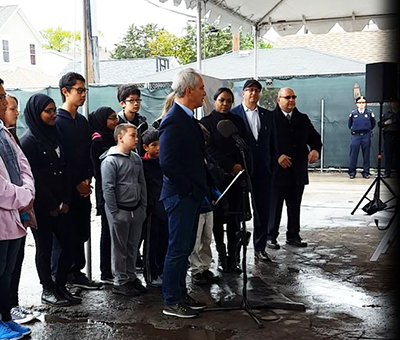
Prussing principal Dr. George Chipain said, “If we want our students to receive the best education, then they must learn in the best environment. Today, we start to write a new chapter to do just that.”
Jackson added, “Although this investment in the annex will relieve overcrowding in the school and allow more classroom space and the facilities our children deserve, it is also a connection to the community.”
John Arena, alderman of the 45th Ward, introduced an extended analogy comparing student success to the transference of energy. “If it is true that energy is never lost and only held until it is needed, then we amass energy here today to be held for the greatest purpose: to power and propel those developing minds and bodies forward.”
Structural Strengthening
Prussing is one of several prototype schools built in the 1920s all over the City of Chicago.
Project team member Loren Johnson of Legat said, “Prussing was built early in the evolution of cast-in-place concrete beams, so standards of quality hadn’t yet been established.”
Not long after Prussing was built, the roof started sagging and cracking. The emergency repairs that were done remain to this day. Johnson compares the steel beams inserted to hold up the roof to the steel rods and pins used on severely broken bones. All those penetrations resulted in roof leaks.
The construction project removes all the steel and strengthens the original concrete beams by wrapping them in carbon fiber mesh. Contractors will also replace the roof and restore damaged masonry.
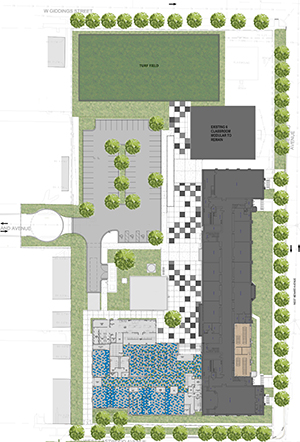
Revived Grounds
The Prussing site, which takes up nearly a full city block, is essentially a parking lot. Not only does blacktop result in skinned knees, but it also leads to flooding: because it doesn’t absorb water, asphalt causes rainwater runoff to immediately overload sewer systems.
When site improvements finish next summer, the Prussing campus will be nearly unrecognizable. It will include a 14,000-square-foot permeable synthetic playfield. Additionally, rainwater from the whole site will be temporarily diverted to underground tanks below the playfield so that it is gradually released, which should help prevent flooding of neighborhood homes. The design also includes a new parking lot with a 58-car capacity and internal vegetated islands.
Contact us to learn more about educational design, or comment below to share your thoughts on this post.


